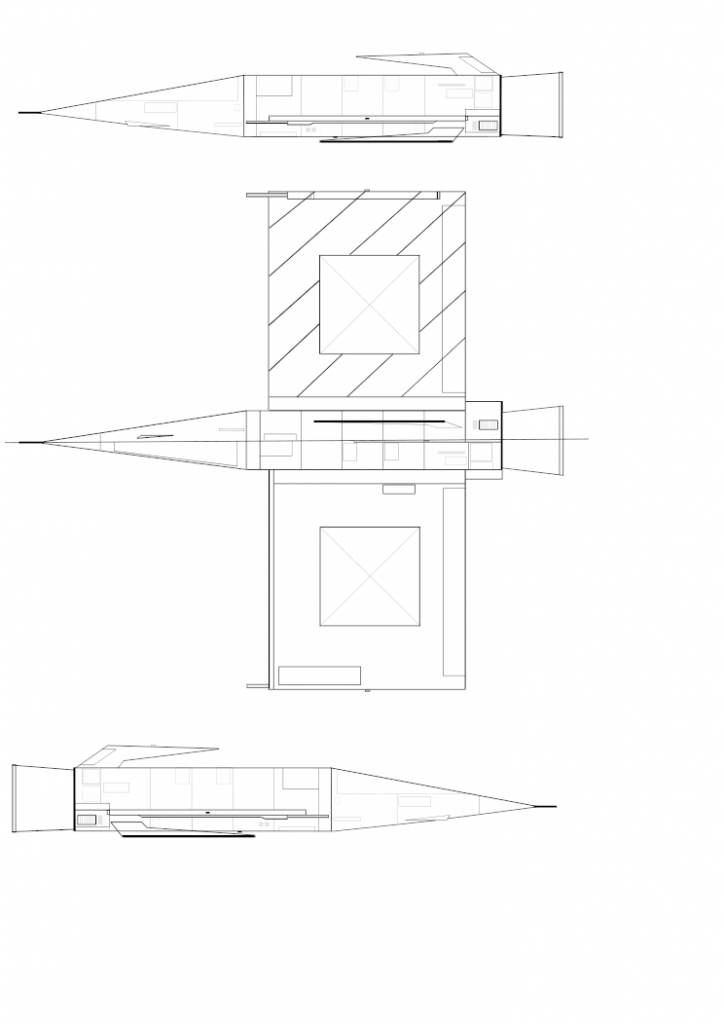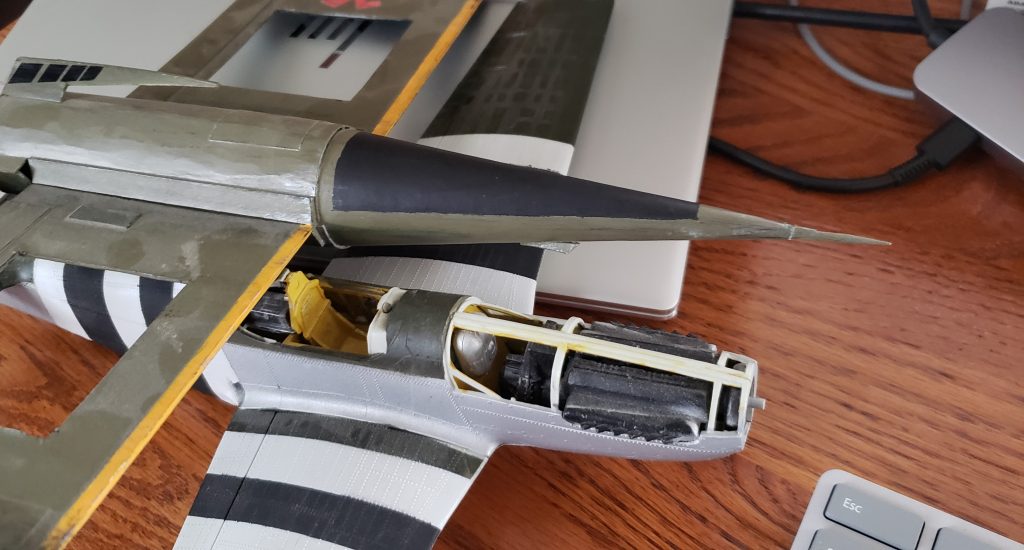I’ve had this idea of making a series of art books based on the old Aircraft in Profile series that my dad had when I was growing up. They were In-depth histories of fighters with multiple profiles in color of each aircraft.
The hardest part of doing a book like this is actually drawing all the different profiles needed. I was either going to have to figure it out myself or hire the task out to an artist. I decided to go ahead and learn how to do it myself. I don’t profess to be a great digital artist, but I’m learning. Here are some of the first and easiest profiles that I’ve done so far. These are all KiV-1 starfighters from my Star Saga series.
It all starts with a vector based line drawing like you see below. This one shows the fighter from the left, bottom, top and right side. I didn’t do a head-on shot. Mental note: do a head-on shot. The top and bottom sides are blended which will be more evident after this one is “painted”. The program I use for this is called InkScape and it’s free and open source.

After I have this sketch completed, I import it into Gimp, which is a free and Open Source Photoshop clone. That’s where all the magic happens. Below is another version of the above line drawing but with just a left/top/right orthographic view. This attempts to recreate the cardboard model of a KiV-1 that I built years ago.

By the way, the KiV-1 is about the same size as a P-51B Mustang, as seen in the models below.

The real point of doing this is to show multiple liveries on the same starfighter. I’ve started doing this with separate files as seen below. The first one is nearly complete. I still haven’t learned how to do shading, so I may come back to this one later and add that. But it does have decals and unit markings.



The Type 33 variant just has the main parts painted in but lacks any decals or unit badges. The Type 35 is still in the process of being painted. Each color has its own layer in Gimp so you can color outside the lines and then just use an eraser to clean them up. Once I realized this was the way to go, things go so much easier. You start with an insanely high resolution vector file and then lower it to about 1000 to import it into Gimp. The zoom in and out feature is your friend.
Because these are different types, there should be some visual different in the appearance other than just colors. I have not attempted that yet. Also, usually on these profiles the aircraft are weathered a bit. Again, have not learned how do to that yet. So I have a ways to go before these are ready for print. But at least now you can see where I’m heading with this project. Eventually I’ll move on to the Alliance fighters which will have readable unit names and numbers.
The unit markers were done seperately in InkScape and imported as a layer in Gimp. Inkscape is perfect for creating cool looking unit badges and other decal type markings.
One thing that surprised me when doing these profiles is how much fun they were to make. Listening to some jams and just coloring in Gimp was pretty relaxing. A nice creative break from writing novels and a good way to make art while the dumpster fire of 2020 burns in the backgroung.